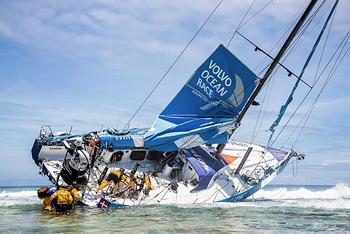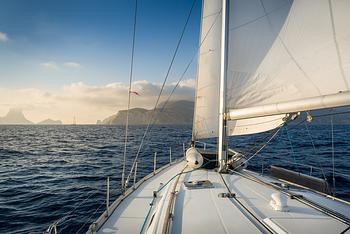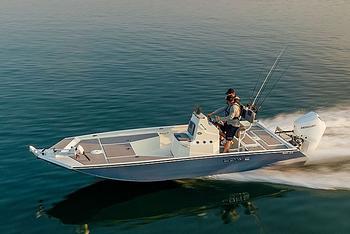Could a marine lithium battery system eliminate the need for an onboard boat generator? Thanks to modern technology, the answer is now yes.
Marine lithium-ion batteries have come a long way in recent years, and many boat manufacturers have begun looking at the technology from a systems-wide perspective. Modern LiFePO4 models can pack far more juice, recharge faster, last longer, and weigh a fraction of those old lead-acid batteries. Inverters can make that potent lithium-ion energy useable by power-hungry accessories ranging from air conditioning to gyroscopic stabilizers. And new charging systems can feed those batteries via outboard power.
Advancements in Lithium-Ion Technology
Much of this has been made possible by the shift to lithium iron phosphate cathodes. (That’s what the cryptic LiFePO4 you see stamped on so many lithium batteries stands for). These are far less subject to what’s termed “thermal runaway” as a result of being subjected to heat, overcharging, or physical damage. In plain English that means they don’t blow up all the time, a problem that plagued many types of early lithium-ion batteries.
These batteries are safe, reliable, and can hold up to about five times as much power as lead-acid batteries while weighing half as much. Still, the energy density they boast is a far cry from fossil fuel. As a rule, organic compounds can store far more power than we’re able to in one of our manmade boxes. While gasoline can produce about 46 megajoules per kilogram, for example, even the best lithium ions can only pack away around 0.7. Lead-acid manages to contain a paltry 0.14 megajoules per kilogram. So while lithium may be a solid win when it comes to replacing a deep-cycle lead-acid house battery system or an electric trolling motor on a boat, it might seem hard to imagine it replacing a fossil-fuel-powered generator.
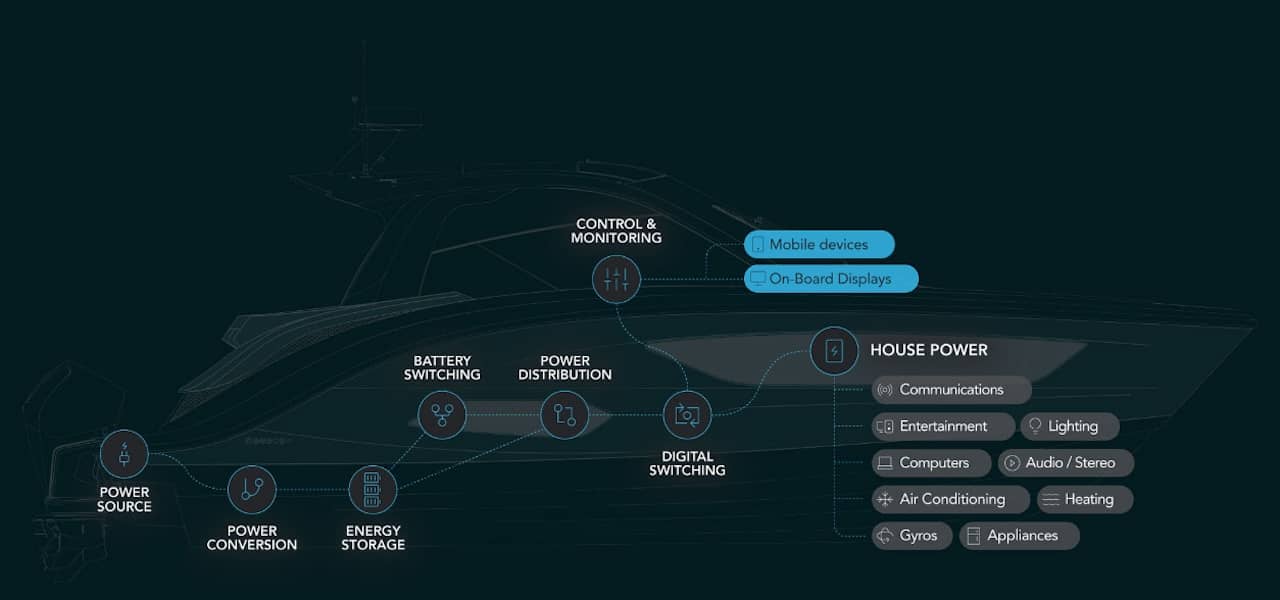
Fathom System diagram. Fathom System photo.
The Fathom E-Power System
Brunswick, the largest boatbuilder in the US (with brands including Sea Ray and Boston Whaler under its umbrella) recently acquired the Navico brand and tasked it with a number of companies making everything from digital switching systems to communications. Among them is Fathom, which is focused on creating systems powered by lithium-ion that can run just about everything you’d find on a boat—thereby eliminating the need for a generator.
Fathom systems can be purchased in kits for retrofitting, but they’re most effective when designed into the boat from the keel up. An appropriate amount of space can be dedicated to the batteries, wiring harnesses can be put in place from the start, and electronics systems can be fully integrated. Critically, they can also be paired with powerplants that provide a lithium-compliant recharge source, which are still few and far between. Note that Mercury Marine (also a Brunswick company) introduced their V10 350 and 400 hp Verados at the end of 2022 with an available 12/48 dual-voltage alternator specifically designed to feed juice to a Fathom.
Mercury is not, however, the only engine manufacturer seeing the possibility of utilizing outboards to generate power that can be stored to run the boat’s systems. When Yamaha introduced their new F450 early in 2023, it came equipped with a completely new phased angler-control charging system able to produce a whopping 96 net amps. And unlike traditional alternators, the system can push out that juice while the engine merely idles, as opposed to revving hard. The output is “stackable,” too, meaning that multiple engine rigs produce the full volume of each; twin engines produce 192 net amps, triples produce 288, etc. While Yamaha doesn’t have a system of its own to harvest and save all this power via lithium-ion, it would be possible for a boat manufacturer or even a savvy boat owner to piece one together and use the F450 as a regenerative power source. Perhaps more importantly, as new companies develop electrification systems similar to Fathom, they can design them for use with the F450. And you can bet that there will be an expansion of both models and engine manufacturers with these sorts of capabilities in the near future.
Check our article on Best New Outboard Engine Innovation
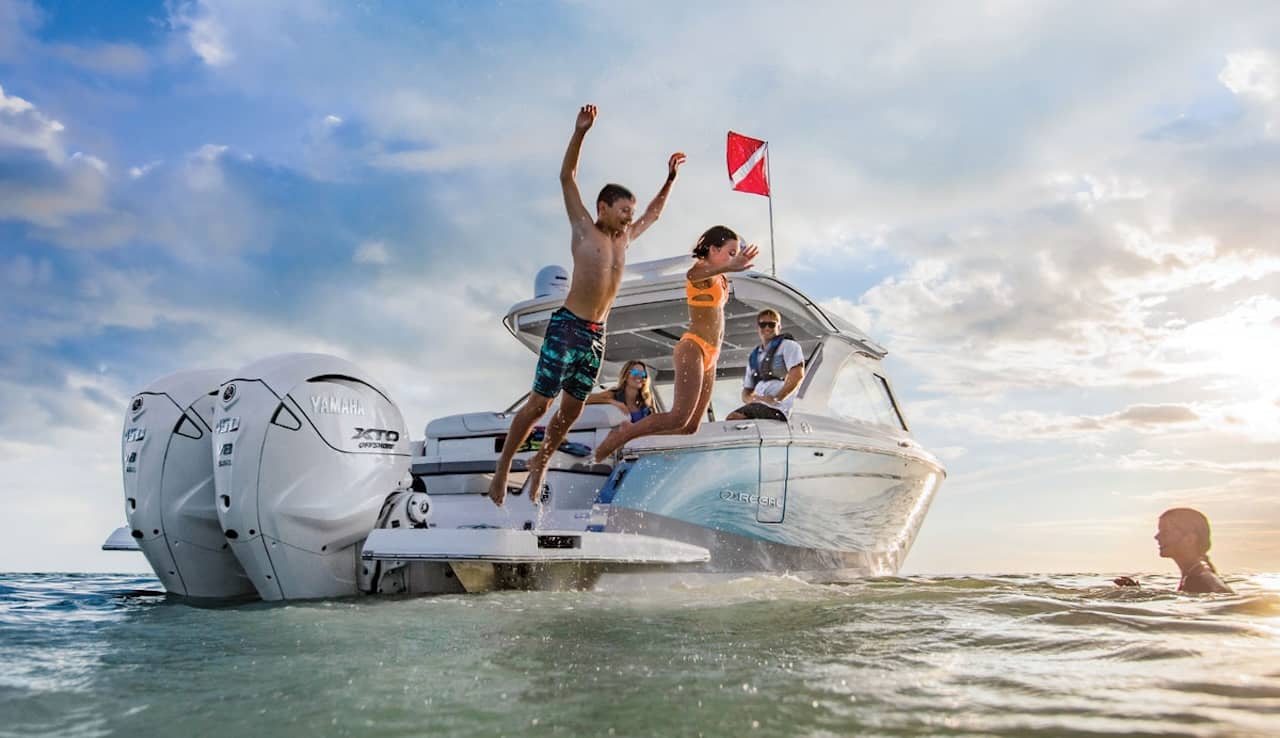
Yamaha F450. Yamaha photo.
E-Power Versus Generator Power
Today, you can buy a boat like the Sea Ray SLX 400 OB with Fathom and power the comfort and entertainment systems for up to eight hours straight, before you’ll need to fire up the outboards or plug into shore power. Right from the MFD screen, you can monitor the state of the Mastervolt lithium-ion battery pack, which is purpose-built for marine use.
An average 5kW generator, on the other hand, could run for eight hours on around six gallons of fuel. A 40-foot boat will probably have around 40 gallons of tankage for the generator, so that translates into over 50 hours of use between fill-ups. For those who enjoy spending long periods of time at anchor this could be a determining factor. A more likely determining factor, however, will be the type of powerplant on your boat. Until more manufacturers begin equipping more engines with lithium-compliant charging systems, the choice here remains very limited. That being said, this tech is advancing rapidly, and we should expect to see more and more options appear every year.
A factor that could tip the scales in favor of Fathom or a similar system is simply how pleasant it is to be aboard your boat. Do you really want to listen to a rumbling generator all day? With E-power, the only sound you’ll hear for hours at a time is the whoosh of cool air gushing out of the vents. Then, there’s environmental friendliness to consider. Eliminating an internal combustion engine is great, but lithium-ion systems come with environmental costs of their own, such as mining, production, and toxicity.
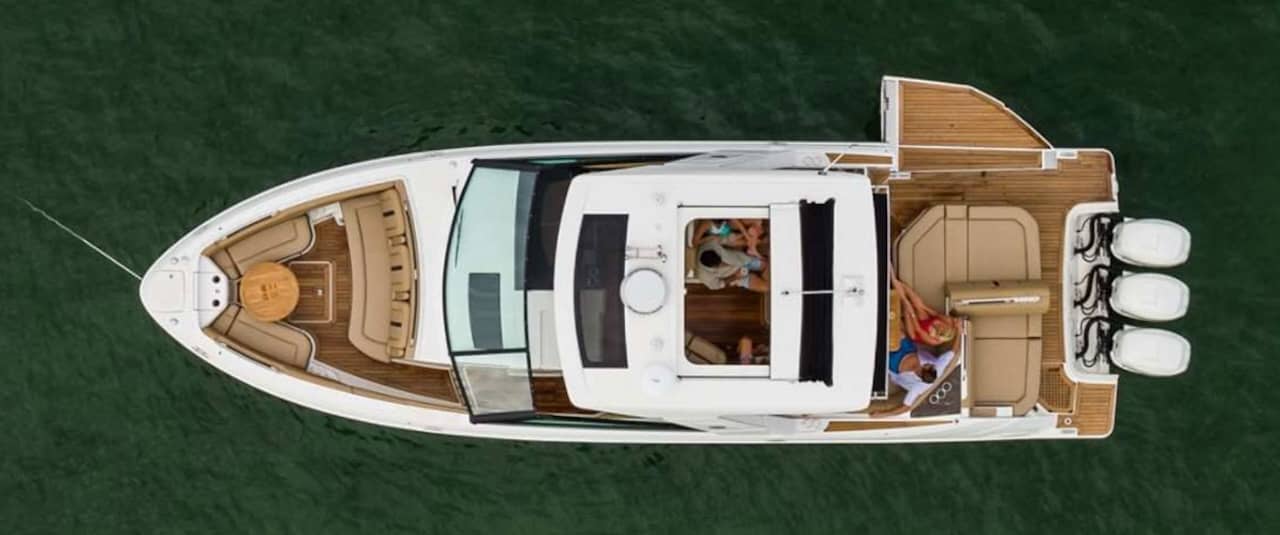
Sea Ray SLX 400. Sea Ray photo.
Future Perfect
As we publish this article, Fathom doesn’t have any direct competitors in the marine segment. You can bet, however, that this will change soon. Similar electrification systems are being developed for the RV industry, and most new products with a potential market eventually become marinized and matriculate into the boating world.
So: can you really ditch that smelly, rumbling generator in favor of lithium-ion? You bet. There may be a number of limitations in the current marketplace, but as time goes on it’s likely to grow easier and easier. And eventually, we’re likely to see a day when internal combustion generators on boats are a thing of the past.
